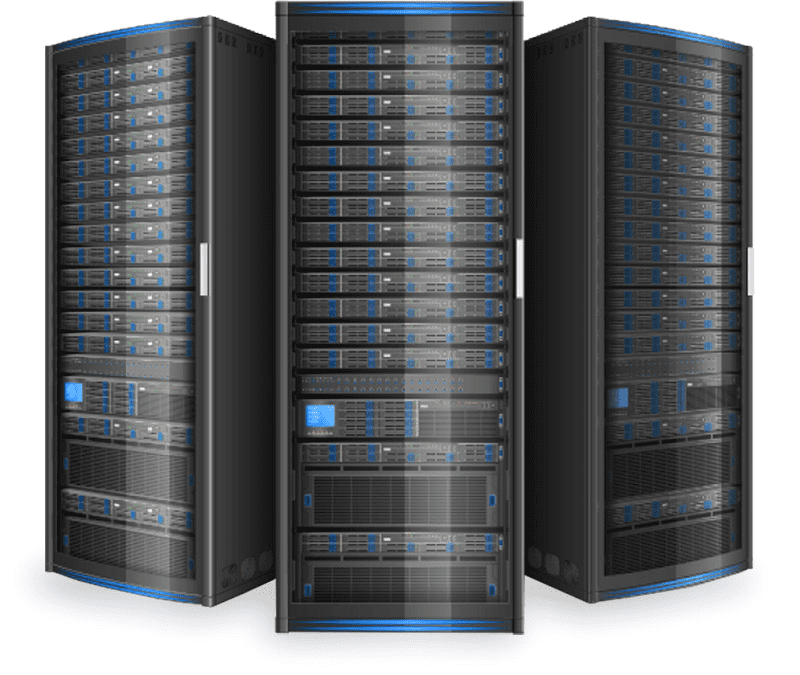What’s a WordPress Website Really Cost?

What’s a WordPress Website Really Cost?
With the rise of do-it-yourself websites and the advertising showing how inexpensive it is to build your own site, people often come to us at Blue Zoo saying how hard it was or how limiting it was. When they ask for a proposal, there is sometimes wonderment around the investment price we share.
While we approach all our creative projects from a holistic view encompassing audience, client, design philosophy, and technical approach, we also know that budget is very important. Over the past several years, we’ve helped educate people about the aspects of a website.
The primary costs are centered around the following:
- Domain Name/URL
- Design
- Development
- Plugins and Licenses
- Hosting
- Maintenance
That’s already a lot of things to cover, right?
We’re going to briefly go into detail about each aspect and give you some price ranges and samples for real-world comparison.
Domain Name/URL
This may seem like a no-brainer, but one source said that all two-word top-level domain names are taken. While you might get lucky to find one here or there, any two-words of a .com site are probably going to be hard to find free (an example being DinnerTime.com).
“But what about a hyphen? Or a .co or .media?”
The bottom line is that someone will search for the non-hyphenated, normal .com domain name first. If that domain is live, then that domain’s website gets the business. Additionally, that business can impose legal action if your domain name is too close. So, no ‘dinner-time.com’ or ‘dinnertime.menu’ (a second-tier domain name).
“But I use Google and it doesn’t matter what a domain name is, right?”
To a point. If you insist on sticking to a longer domain name like Dinner-Time-Menu-Services.com you’ll need to make sure you have excellent and useful content or Google won’t make you easy to find. But that’s a whole much much longer post.
Top-Level Domain Names are generally in the $15-80 range depending on the name extension (like .bar or .clinic) and additional features like WHOIS Privacy (in case you don’t want people to know who is behind the website).

Website Design
Websites aren’t just online brochures. There is such a broad type of website as well; entertainment, eCommerce, informational, promotional, membership, and more. While there are templates you can buy ready to populate with content, images, and links, they are often inflexible to the custom approach that may set your business apart from others. The design process involves a graphic designer and possibly a copywriter and photographer (or at least photography and/or illustrations).
Graphic Design
This is where we need a professional Graphic Designer.
“But most sites look the same these days? Do I really need a graphic designer?”
As graphic design professionals, we are trained to look at more than aesthetics. The audience, experience, product or service, competition, typography, color psychology, and more. And, yes, some trends we design for are due to the current technology, platforms, or medium; desktop, mobile, iPad, or HUGE monitors in an office conference room.
Additionally, Graphic Design is not art. While it can be aesthetically pleasing it must inspire some action or the designer’s job has not been accomplished.
Design rates vary widely based on experience, the company overhead, and the project requirements. Additionally, design and development are usually tied together in a package price vs an hourly rate of design.
- A single-page website with 5-6 sections (Hero, Intro, Services, Testimonials, Call to Action, and Contact form) range between $1,500-3,500.
- A complete website with 6-10 pages can run from $4,500-$10,000.
The range is also attributed to the fact that the larger the site, the more varied the requirements which may include copywriting and photography.
Copywriting, Editing, and Proofing
One thing most people try to save money with is copywriting. It is the number one website launch delay in every single project we’ve ever done when a client wants to do content creation. So much so we stopped offering that option unless they could give it to us upfront.
A great copywriter not only helps find the voice of the company for the website, but researches look for keywords (for SEO), relevant text, industry terminology, and verbiage a customer may use that a client may not necessarily use. An example is the graphic design term ‘leading’ (pronounced led-ing) meaning the vertical space between lines of text. In web design, it’s referred to as line-height. And in Word or Google docs it’s referred to as line spacing. So a copywriter would use ‘line spacing’ as it would be more understandable and not industry-specific.
In the end, the copywriter then reviews the website for all content to ensure nothing is left unwritten so that the website visitor can make a buying decision without hesitation.
Pricing for copywriting varies depending on the size of the project, research involved, and how clear the existing content is to reorganize and place on the website. A sales website may need several ‘long sell’ pages with over 2000 words of copy, testimonials, descriptions, and technical content. An eCommerce site that requires 100 items each with ‘romance’ copy, descriptions, usage, and other details could easily exceed several thousand words.
Currently, rates range from $250-900/page.

Photography
A picture is worth a thousand words.
We always recommend authentic photography for clients, but hiring a photographer may not always be within the budget. However, it is one area we help build trust in a website visitor. To see key staff, interactions, products, and action help a visitor connect.
Like other areas, pricing depends on experience and skill, equipment, editing, and the type of photo being taken (headshots, model shoots, or aerial photography).
The best way to find a photographer (if you’re not using us to handpick one for you), is to search for photographer websites and look at their style to match your brand.
Photography ranges widely from $1500-5000 and up. Some photographers shoot a specific list of photos and others will shoot a variety to allow you to have a library of images to use. You are also usually given the right to use the photos however you want for your marketing online and offline.
Development
Contrary to popular belief, you can’t just ‘click a button to launch a website. A skilled experienced developer has a process and standards from which they build sites.
A finished site that is customized from a submitted and approved graphic design comes to the developer in pieces that have to be put back together in a logical, scalable, and organized manner. An example would be the fonts on a website. They need to use certain code to adhere to standards that can be viewed on web browsers (and there are many). While the designer pics the font that works on the web (and not all fonts do), the developer makes sure it displays properly.
So instead of saying, “Hey browser: use Ariel for all paragraphs that are about ‘this’ tall.”
A developer must ‘say’ (in code):
body {
font-family: Arial, Helvetica, sans-serif;
font-size: 16px;
}
Then comes the functionality of the site. Some people need an event calendar. And some need an event calendar that takes ticket fees, tracks seats, RSVPs, allows for community submissions, create virtual events, and more. Rather than code from scratch, a developer integrates a specific plugin that enhances the website. Generally, there are 3-10 extra plugins. Some standard tools in the developer’s toolbox and some custom tools for a specific client.
The flexibility of medium (mobile, desktop, and browsers) is another aspect a developer must consider. This also goes into the coding of a site and testing has to be done on every aspect.
As mentioned above in the Design section, a website is rarely just development but is a joint effort that works hand-in-hand with Design. The prices range from $5000-$30,000 and more (a small informational site up to an eCommerce and membership site.)

Plugins and Licenses
In the introduction, we named a few plugins like booking calendars, donation applications, eCommerce, memberships, and fonts. Many of these have ‘free’ levels that give you a good bit of functionality. Many also have a ‘paid’ tier of service that gives extra bells and whistles.
Nearly all of the paid plugins have an annual fee or at least a one-time price (though we’ve seen the annual plugins stay on the market much longer than the others).
Like everything on our list, there is a wide range of pricing depending on the complexity and service of each plugin. One calendar program has an annual fee of $99 (though you have to pay more for add-ons). A booking calendar we use has a $504 annual plan.
Donately, a donation platform, has two price plans that are great for non-profits: one is ‘free’ but they take 4% in processing fees (handy if you aren’t already set up with credit card services or want to make it super easy for those who donate) and a paid level of $828/annually and they drop fees to 2%.
While WooCommerce is a free platform, it needs a designer and developer’s touch to make it be on-brand and has many add-on features that require license fees. They sell an ‘Essentials’ set of extensions for $503/annually that covers things like sale bundles, gift cards, coupons, and Google ads.
Fonts for some companies have been hand-picked from high-end font foundries (a holdover name from when fonts were made from lead and sold to magazines and newspapers). In the early days of the web, it was impossible to use these fonts, but most have a license available for a fee based on your website traffic. While you can often download a font for free, they are for personal use only. Any commercial use must have a font license unless stated otherwise. One site we visited had all their 27 fonts for $27 for personal and testing use only. They have no web or app license listed. Linotype’s font family “Avenir® Next” charges a server license of $890 annually per style, so regular, italic, bold, and bold italic would run you $3560/annually.
Conclusion? Licenses will probably run you at least $150-500 annually.

Hosting and Maintenance
Think of hosting like you would a brick-and-mortar store. You have to pay a lease to have a space. As part of the deal, you have plumbing, electrical wiring, walls, roof, parking lot, and other amenities that might include furniture, fixtures, and appliances.
Maintenance for a website is the extras: electricity, water, gas, internet, snacks, signage. Some have a one-time cost. Some have a monthly cost. When something is wrong with the electricity, if it’s from the street to the building, the electric company pays for it. If it’s inside the building, the landlord or you have to pay for a fix.
MANAGED HOSTING is a mix of both. Not only are you renting, but someone comes in and checks all the locks, replaces the bulbs, replaces worn carpet, puts in a new router, and leaves a note that the toaster is working, but the manufacturer is no longer in business and you may want to get a new toaster that has support and warranty.
That’s what managed hosting does for you.
Hosting depends on these factors:
- CMS Used
- Visitors per Month
- Bandwidth Used per Month
- Storage Needed
But hosting isn’t just about a server and uptime. Today’s dynamic websites require more:
- Security updates. Malware, hackers, and other threats are real. Our servers and software block attacks all the time.
- Core updates. WordPress is updated all the time for new features and security. There have been three major updates since December 2020 with 3-5 smaller updates along the way. WP 5.9 is due this December (2021) and WordPress 6.0 is due in 2022.
- Plugin updates. Plugin creators also work towards improvement constantly but also have to make changes when WordPress Core is updated. Especially when there are security patches released.
- Regular Backups. Backups of large sites take time, bandwidth, and storage space, but having a daily backup is important especially if you are making updates or, more importantly, doing core or plugin updates. We recommend daily backups with a good hosting company.
- Content changes (blog posts, staff changes, events, etc). Most Hosting and Maintenance don’t include this service. This is where managed or locally managed maintenance comes in.
- Development updates (new functionality or changes to how things work). Depending on your site, you may discover that a form, eCommerce aspects, or some other functionality needs tweaking to better fit in a new process flow. This is best handled through the original developer and can be worked into a Managed Hosting Account with Maintenance.
- SEO updates. For many websites and businesses, an initial setup is not enough. Planned advertising and marketing may need SEO updates, keyword research, and editing, and advertising spending.
While you can get website hosting with apparent bells and whistles starting at $6.99/month with a 3-year contract paid upfront, we’ve seen websites get corrupted and lose 90 Days worth of blog posts, images, and submissions. Nobody’s got time for that!
Managed Hosting and Maintenance plans vary widely but can include the normal hosting, all the annual fees, and time for help (like a retainer). Pricing for that runs from $200-$500/month depending on the complexity of your site. Pricing for websites that need content, development, and SEO can range in thousands of dollars and may include advertising spending.
 What’s the Grand Total?
What’s the Grand Total?
As we’ve shown, prices range dramatically for every service, but here is a range:
- Startup (domain name, design, and development)
- Basic One Page: $1,530-3,530
- Small Site (1-5 Pages): $2,500-$8,000
- Medium to Large Site (6-20 Pages): $5,000-$12,000
- Complex to eCommerce Site: $10,000-$20,000+
- Operating (hosting, plugins, and basic updates quarterly)
- Basic (you’re probably going to lose your site one day) price: $3.99/month
- Small to Medium Site: $30-200
- Medium to Large Site: $150-500
- Large to eCommerce Site: $400-$1,200+
- Maintenance (hosting, plugins, and monthly support)
- An extra $100-500/month depending on the needs of the site
The last thing to consider is what you value: your time or investment. we think that the overall cost of an active and successful WordPress website can be as low as $1500 if you’re conservative and just need something simple. We’ve found the average range for our clients has been from $8000-$32,000 depending on the complexity and size. You’ll add much more for advertising and marketing.
Piggybank Photo by Fabian Blank on Unsplash






